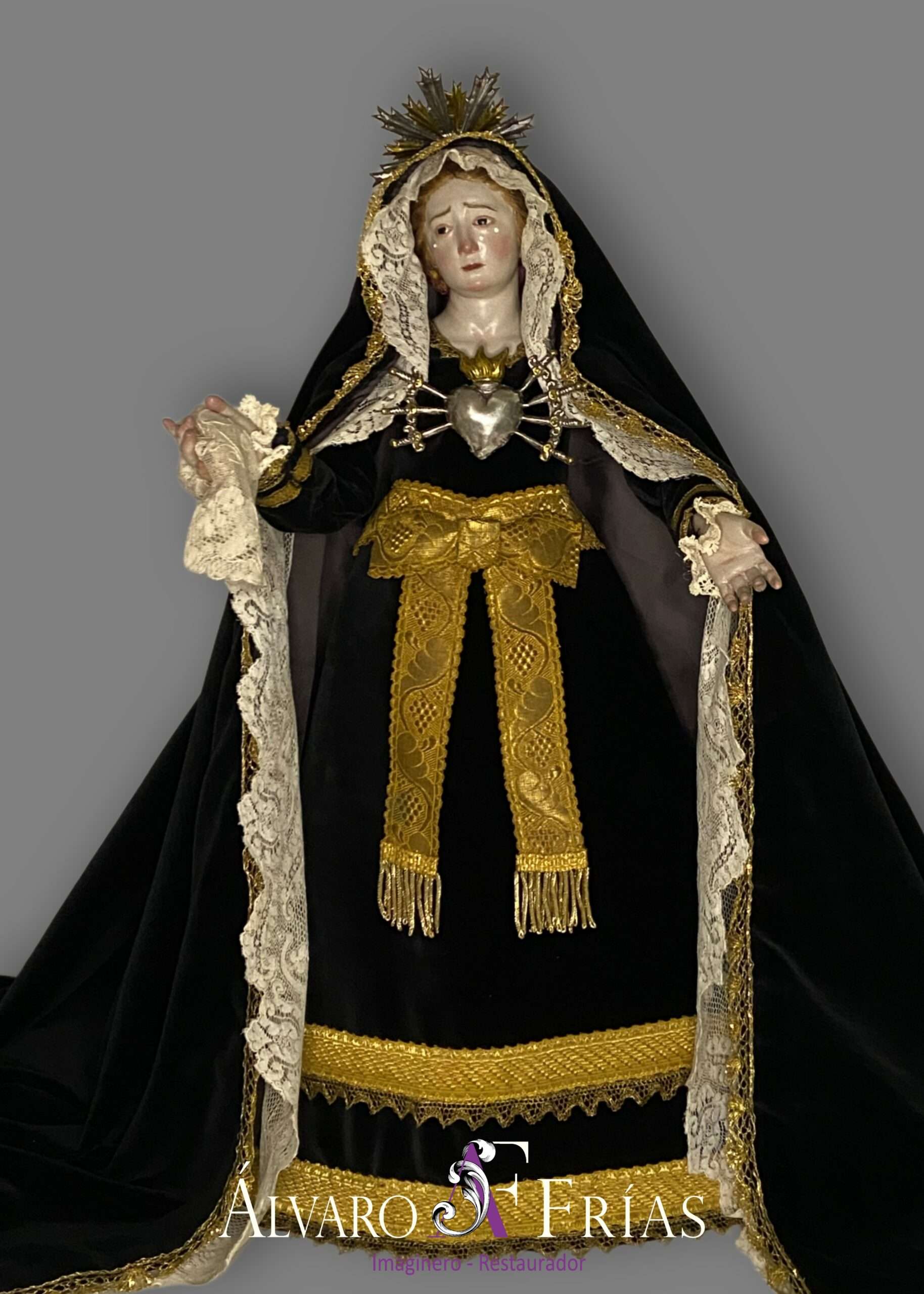This small statue from the Genoese-Neapolitan school was in a fairly poor state of preservation, with wood-eating insects attacking the entire surface. It showed surface dirt and embedded polychrome layers, as well as varnish oxidation. At the time, the Virgin had three tears, of which only half remained. The candlestick was unstable and too small for the statue, making it look disproportionate. This was further accentuated by the excessively long articulated arms.
The intervention consisted first of disinfesting the sculpture to kill any remaining wood-eating insects. The candlestick and joints were then dismantled to facilitate chemical cleaning of the statue. After this, the gaps caused by the insects were filled with acrylic resin and wood paste, restoring the integrity of the wood. In the polychrome areas, the stucco work continued to reintegrate the color using a water-based and mimetic technique. After the final varnish, the three original teardrops were replaced. The wood, in turn, was protected to prevent further wood-boring attacks.
The candlestick and joints were newly crafted in pine and beech wood, respectively, with proportions appropriate for the image.
The silver elements, such as the halo and the heart with seven daggers, were cleaned to remove sulfuration and restore the original two-tone lacquer.

